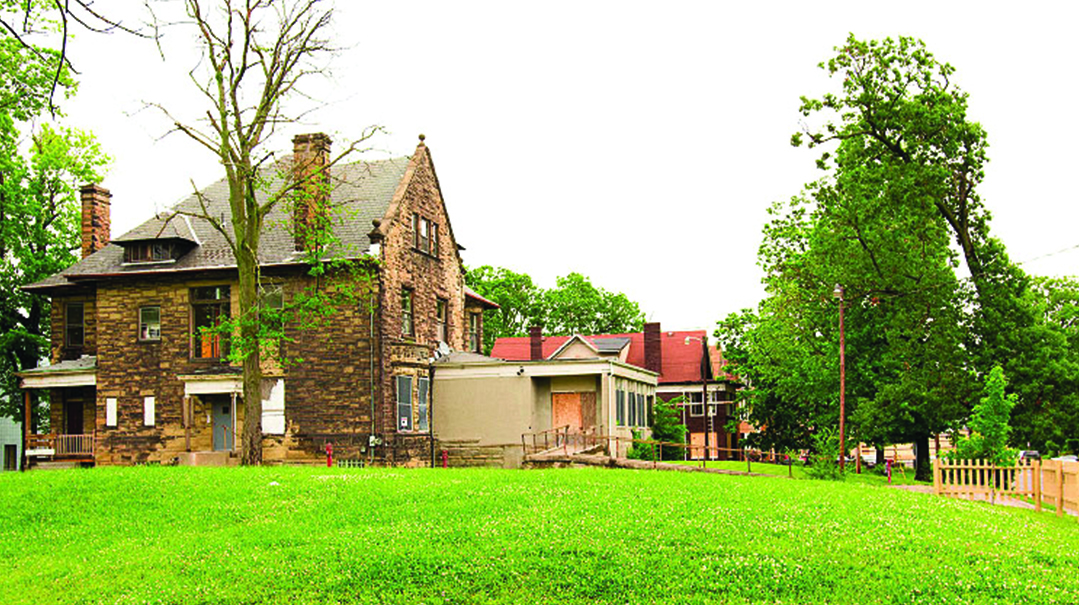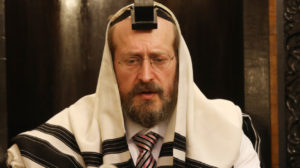Noble Footsteps in the Queen City

Old Cincinnati, as seen through the eyes of a talmid of Rav Eliezer Silver

The spot where Rav Silver’s shul once stood at the corner of Washington and Rockdale Avenues is now the home of the Boys & Girls Clubs of Greater Cincinnati. There is no sign that a majestic synagogue once stood on that spot but for Mr. Eichelberg a local community askan who helped build many of Cincinnati’s shuls over the years the memories are fresh. “A rebbi is forever ” Mr. Eichelberg declares (Photos: Laky Majeski Marc Randolph & The Cincinnati Judaica Fund)
R av Eliezer Silver is best known for leading the Vaad Hatzalah during World War II but fewer remember him as a community rav.
Mr. Hugo Eichelberg now 87 was one of those who could call Rav Silver his rebbi. As a young man Mr. Eichelberg attended Knesseth Israel where Rav Silver led the congregation for 37 years.
Those long-ago days were the subject of a recent tour in Cincinnati conducted by the Cincinnati Judaica Fund and Congregation Zichron Eliezer the successor congregation to Knesseth Israel (or KI as the old-timers still call it) and the biggest shul in Cincinnati. Rabbi Silver’s shul was rededicated in his name when it moved to its current home in 2009.
Of course the frum community in Cincinnati today is also notable and growing with multiple synagogues and schools a state-of-the-art mikveh an exciting day camp and a strong and active kollel. The town known for its impressive old homes and friendly atmosphere has become a choice for many young families who want to live the “out of town” life.
A Rebbi is Forever
In the early part of the 20th century Cincinnati was a destination on the Jewish map in part because of Rav Silver’s outsized contribution to the Jewish people. The founder of Agudath Israel of America first came to Cincinnati in 1931 after serving as the community rabbi in Harrisburg Pennsylvania and Springfield Massachusetts starting in 1907.
Today Mr. Eichelberg leads us to the spot where Rav Silver’s shul Knesseth Israel once stood. It’s in the North Avondale neighborhood of Cincinnati a formerly frum part of town that the community left behind in the 1960s. North Avondale is no longer recognizable as formerly Jewish — with shuls turned into churches and kosher butcher shops now family dollar stores — but the memories remain.
The spot where Rav Silver’s shul once stood at the corner of Washington and Rockdale Avenues is now the home of the Boys & Girls Clubs of Greater Cincinnati. There is no sign that a majestic synagogue once stood on that spot but for Mr. Eichelberg a local community askan who helped build many of Cincinnati’s shuls over the years the memories are fresh. “A rebbi is forever ” Mr. Eichelberg declares as he begins to quote Rav Silver’s psakim (halachic decisions) as if hearing them for the first time: the best time to daven Shacharis while traveling the order of Erev Pesach when it falls on a Friday hilchos Chanukah.
Payback Time
Before Rav Silver and a group of balabatim (including Ben Berkowitz son-in-law of Rav Yisroel Belsky ztz”l) opened the Cincinnati Hebrew Day School in 1947 there was an after-school yeshivah called Yeshivas Etz Chaim that taught the boys after public school.
The school founded in 1915 was led by rosh yeshivah Rav B.Z. Parchesky. When the Ponevezher Rav came to Cincinnati to collect from the Jaffee family in Dayton — well-known philanthropists of the time who made their money in the scrap-metal business and who were staunch supporters of Ponevezh — the Rav would stay with Rav Parchesky or Rav Silver for Shabbos and go to Dayton on Sunday.
Mr. Eichelberg recalled that on one of these trips the Ponevezher Rav asked Rav Parchesky who was recognized as an illui what he was doing in a small town like Cincinnati. “You belong in New York or Chicago ” the Ponevezher Rav said. Rav Parchesky replied that the Ponevezher Rav was right. He could’ve gone to Chicago or New York to lead a congregation but he chose to dedicate himself to chinuch to honor his parents.
“When I grew up in Poland ” Rav Parchesky said “my parents were very poor. They had nothing but one cow that gave them milk to support our family. They took that cow and sold it so they had enough money to send me to yeshivah so that I could become a talmid chacham. That’s why I’m here in Cincinnati. I’m merely paying back what my parents gave to me.”
Oops! We could not locate your form.













